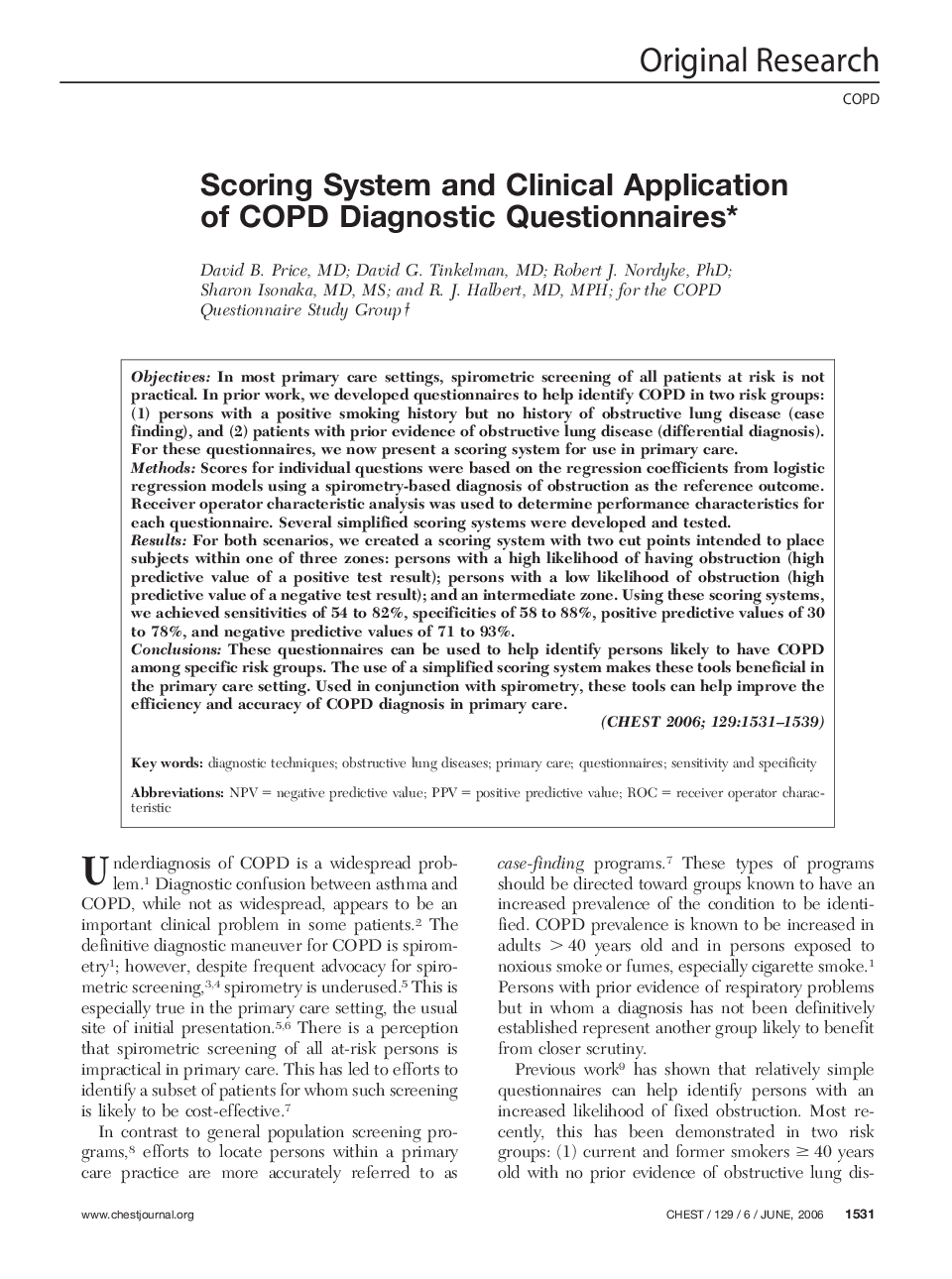| Article ID | Journal | Published Year | Pages | File Type |
|---|---|---|---|---|
| 2905944 | Chest | 2006 | 9 Pages |
ObjectivesIn most primary care settings, spirometric screening of all patients at risk is not practical. In prior work, we developed questionnaires to help identify COPD in two risk groups: (1) persons with a positive smoking history but no history of obstructive lung disease (case finding), and (2) patients with prior evidence of obstructive lung disease (differential diagnosis). For these questionnaires, we now present a scoring system for use in primary care.MethodsScores for individual questions were based on the regression coefficients from logistic regression models using a spirometry-based diagnosis of obstruction as the reference outcome. Receiver operator characteristic analysis was used to determine performance characteristics for each questionnaire. Several simplified scoring systems were developed and tested.ResultsFor both scenarios, we created a scoring system with two cut points intended to place subjects within one of three zones: persons with a high likelihood of having obstruction (high predictive value of a positive test result); persons with a low likelihood of obstruction (high predictive value of a negative test result); and an intermediate zone. Using these scoring systems, we achieved sensitivities of 54 to 82%, specificities of 58 to 88%, positive predictive values of 30 to 78%, and negative predictive values of 71 to 93%.ConclusionsThese questionnaires can be used to help identify persons likely to have COPD among specific risk groups. The use of a simplified scoring system makes these tools beneficial in the primary care setting. Used in conjunction with spirometry, these tools can help improve the efficiency and accuracy of COPD diagnosis in primary care.
